Wat Phra Singh, one of Chiang Mai's most revered and stunning temples, stands as a symbol of cultural and spiritual heritage in northern Thailand. Located within the walls of the Old City, this magnificent temple is a masterpiece of traditional Lanna architecture, offering visitors a glimpse into Thailand's rich history, artistic brilliance, and religious devotion. From its intricate designs to its centuries-old history, Wat Phra Singh remains a jewel of Chiang Mai and a significant cultural landmark.




The Historical Significance of Wat Phra Singh
Wat Phra Singh, officially named Wat Phra Singh Woramahaviharn, was founded in 1345 during the reign of King Pha Yu of the Mangrai dynasty. Built as a royal temple, it was originally constructed to enshrine the ashes of King Pha Yu’s father, King Kham Fu. Over time, the temple became renowned for housing the sacred Phra Buddha Sihing, a highly venerated Buddha statue believed to have origins in Sri Lanka.
The Phra Buddha Sihing is the temple’s central attraction and has given Wat Phra Singh its name, meaning “Temple of the Lion Buddha.” The statue holds immense religious importance and is the centerpiece of the Songkran Festival—Thailand’s New Year celebrations—during which it is paraded through Chiang Mai to allow locals to pour water as a mark of respect and blessing.
Throughout its history, Wat Phra Singh has been restored and preserved under the guidance of kings, monks, and historians. Its resilience over centuries reflects the enduring importance of Buddhism and Thai culture in the region.
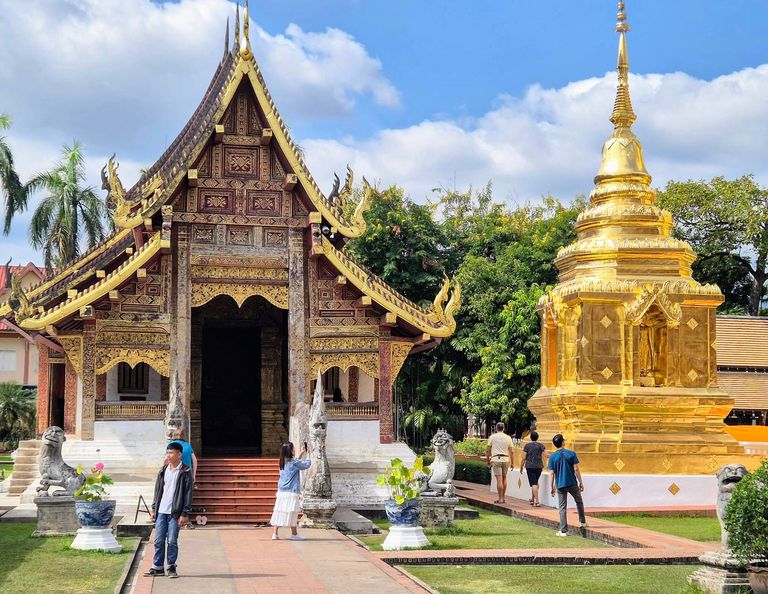


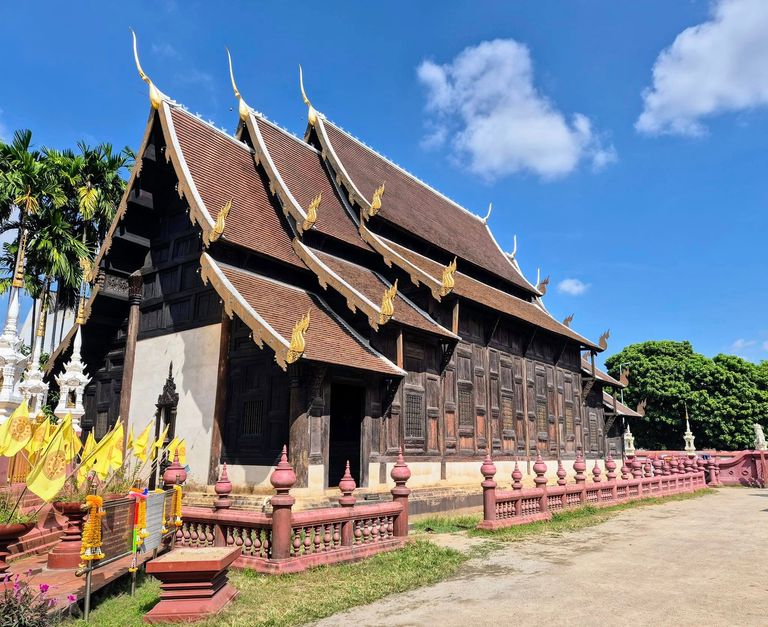
The Architectural Beauty of Wat Phra Singh
Wat Phra Singh is a shining example of Lanna architecture, a style unique to northern Thailand that reflects the region’s traditional craftsmanship and artistic heritage. The temple complex is filled with ornate buildings, intricate carvings, and golden decorations that dazzle visitors.
The Viharn Lai Kham: This small but exquisite assembly hall is the heart of Wat Phra Singh. Built in the 14th century, it houses the revered Phra Buddha Sihing statue. The viharn is adorned with elaborate gold and lacquer murals, depicting scenes from Buddhist scriptures and everyday Lanna life, offering a fascinating window into the region’s culture and history.
The Viharn Luang: As the largest building in the temple complex, this grand viharn was reconstructed in the 1920s and showcases a stunning blend of Lanna and classic Thai architectural styles. Its richly decorated gables, carved wooden details, and towering interior make it a sight to behold.
The Chedi (Stupa): Wat Phra Singh’s iconic golden chedi rises gracefully within the temple grounds. The stupa, believed to date back to the original construction of the temple, features a bell-shaped design that is typical of Lanna architecture. Its gleaming golden surface reflects sunlight, adding a sense of majesty to the temple’s atmosphere.
Visitors will also find beautifully crafted Naga serpent statues, gilded finials, and intricately detailed rooflines, all of which display the exceptional skills of Lanna artisans.

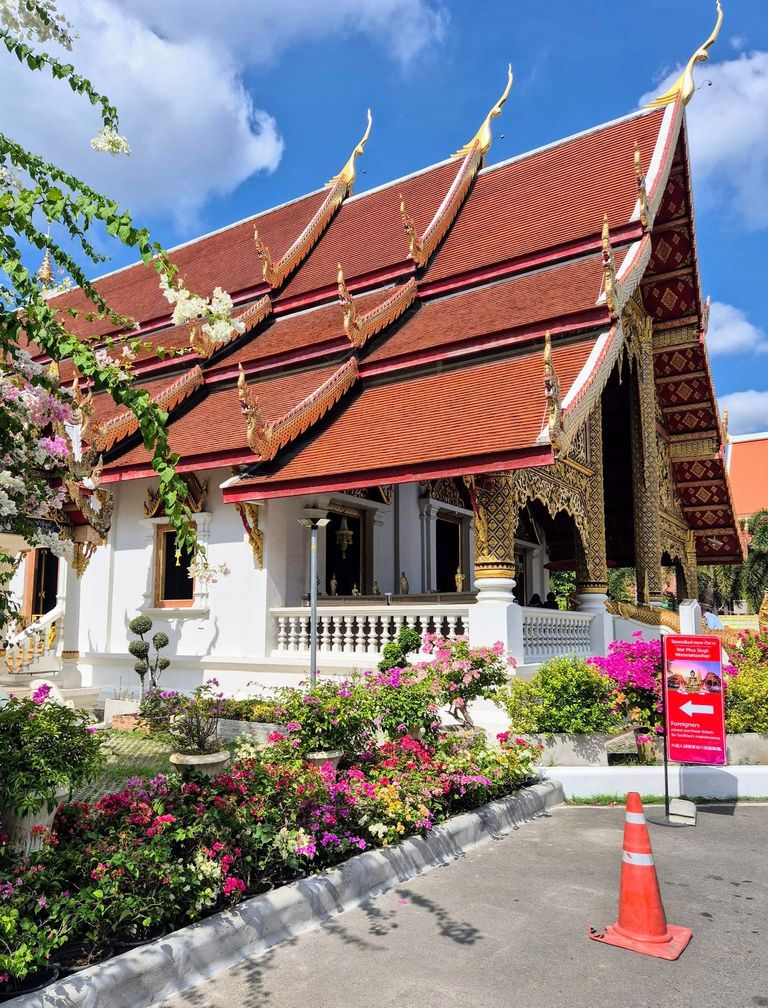


The Spiritual and Cultural Role of Wat Phra Singh
Wat Phra Singh serves as a vital spiritual center for the people of Chiang Mai and beyond. It is an active temple where monks live, study, and practice the teachings of Buddhism. Locals visit regularly to pray, meditate, and offer alms, fostering a sense of community and spiritual well-being.
The temple is particularly vibrant during the annual Songkran Festival, celebrated in April. During this time, the Phra Buddha Sihing statue is paraded through the streets of Chiang Mai, allowing worshippers to engage in traditional water-pouring rituals to bring blessings and good fortune for the New Year.
For visitors, Wat Phra Singh provides a tranquil environment to experience Thai Buddhism, learn about local traditions, and appreciate the temple’s sacred and serene ambiance.



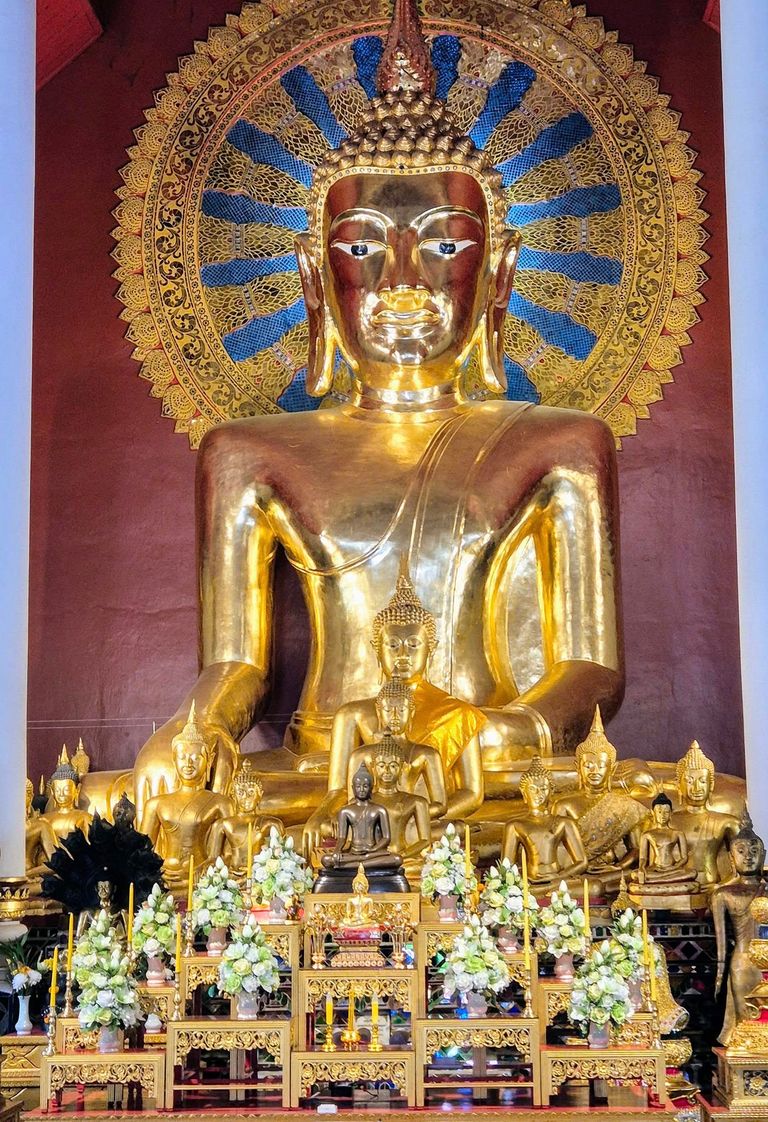
A Place of Timeless Beauty
The beauty of Wat Phra Singh lies not only in its architecture but also in its ability to transport visitors back in time. The intricate gold leaf details, ancient murals, and peaceful surroundings offer a unique blend of artistic excellence and spiritual calm. Walking through the temple grounds, visitors can marvel at the craftsmanship and dedication that has gone into preserving this sacred site for generations.
The temple’s gardens, shaded walkways, and serene courtyards add to its charm, providing a perfect space for reflection and mindfulness. At sunrise or sunset, the golden chedi glows brilliantly against the sky, offering one of Chiang Mai’s most breathtaking views.

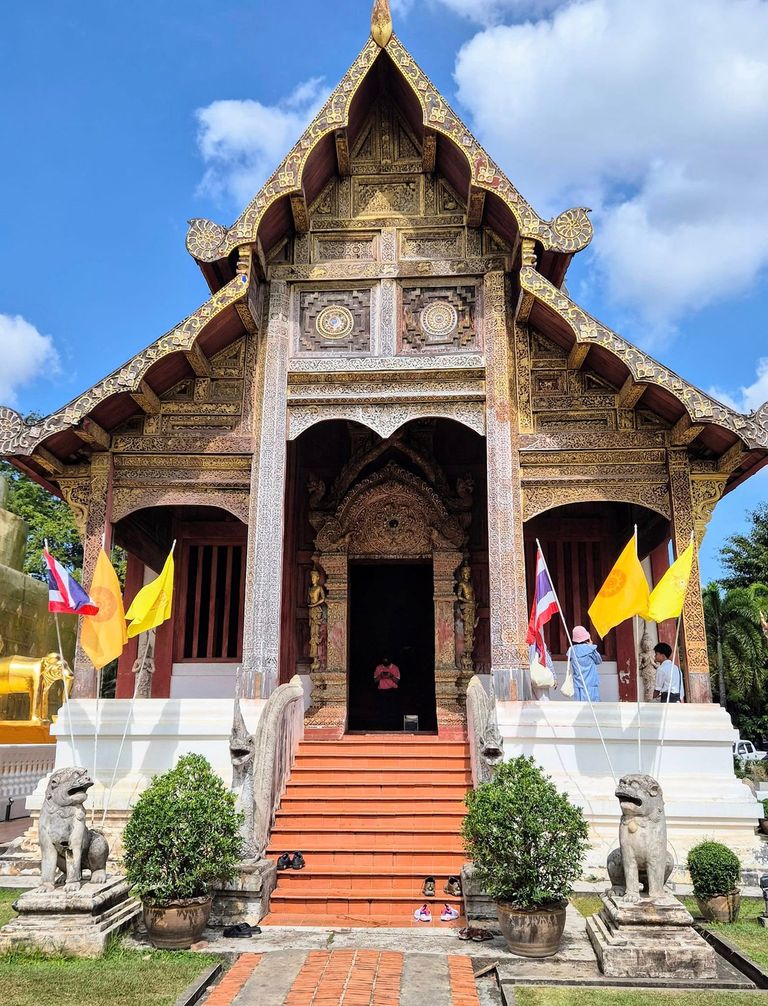

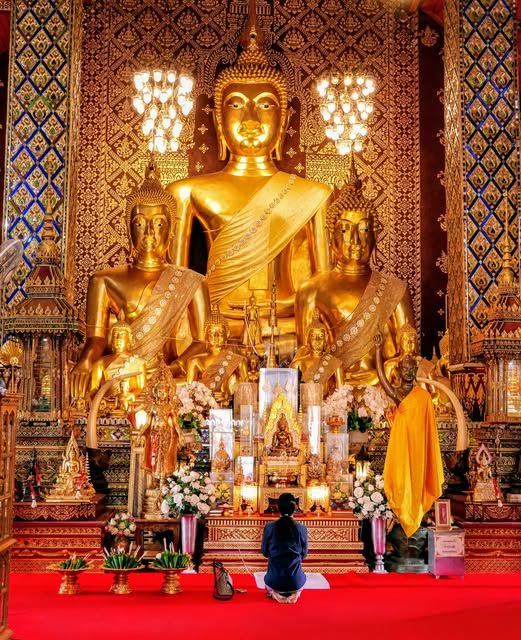
Conclusion
Wat Phra Singh stands as a testament to Chiang Mai’s rich cultural and spiritual history. Its magnificent architecture, sacred Phra Buddha Sihing statue, and timeless beauty make it a must-visit destination for anyone exploring Thailand. As both a place of worship and a historical treasure, the temple bridges the past and present, showcasing the enduring legacy of Lanna culture. Visiting Wat Phra Singh is not just about admiring its beauty—it is an opportunity to connect with the deep traditions and spirituality that continue to shape the vibrant heart of Chiang Mai.




